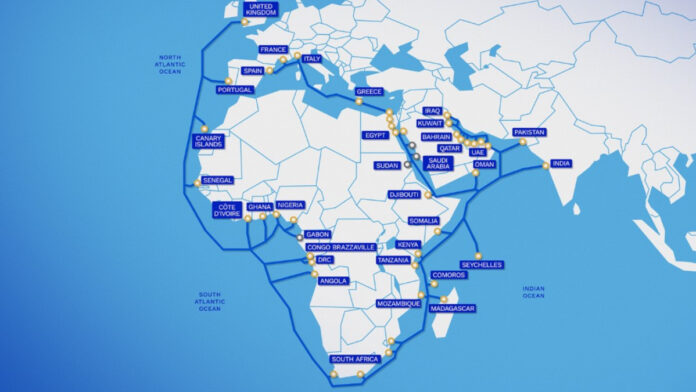Meta has said that the system connects East and West Africa in a single loop and links the continent to the Middle East, South Asia, and Europe
In sum – what to know:
2Africa subsea build is now complete – The 45,000-km open-access system connects 33 countries across Africa, Europe, and Asia, forming the world’s longest subsea cable network.
New engineering features expand capacity – The system uses 16-fiber-pair SDM design, deeper burial, and switching technologies to improve bandwidth flexibility and resilience.
Expected to cut costs and boost growth – Capacity increases could lower wholesale bandwidth prices, strengthen data center and 5G ecosystems, and add billions to Africa’s GDP.
Meta and its consortium partners announced the completion of the core 2Africa subsea cable system, which claims to be the world’s longest open-access subsea network. The system connects East and West Africa in a single loop and links the continent to the Middle East, South Asia, and Europe. It currently lands in 33 countries and is designed to support connectivity for more than 3 billion people across Africa, Europe, and Asia.
2Africa was developed by a consortium including Meta, Bayobab (MTN Group), center3 (stc), CMI, Orange, Telecom Egypt, Vodafone Group, and WIOCC, with additional contributions from Bharti Airtel and MainOne on specific segments. The full system—including the Pearls extension scheduled for 2026—extends roughly 45,000 kilometers. Deployment required coordination across 50 jurisdictions over nearly six years, involving local partners for landing sites, construction, and regulatory approvals, according to Meta.
The subsea cable incorporates spatial division multiplexing (SDM) and supports up to 16 fiber pairs, doubling the capacity of older systems. It also uses undersea optical switching for more flexible bandwidth management. Engineering work included deeper burial, routes designed to avoid seabed hazards, redundant powering architectures, and solutions for safely crossing more than 60 oil and gas pipelines, the firm added.
On the West segment alone, the system supports 21 Tbps per fiber pair on eight pairs, for a total trunk capacity of up to 180 Tbps. The increased capacity is expected to reduce wholesale bandwidth costs, expand competition, and support regional cloud, data center, and 5G growth. Meta cites research indicating the system could add up to $36.9 billion to Africa’s GDP within several years of operation.
Meta is also planning a more ambitious cable system that aims to connect five continents. The 50,000 kilometer Project Waterworth is expected to be the world’s longest 24-fiber-pair submarine cable, connecting the U.S., India, Brazil, South Africa, and other regions.
Earlier this week, Google unveiled Dhivaru, a new Trans-Indian Ocean subsea cable system that will link the Maldives, Christmas Island and Oman.

